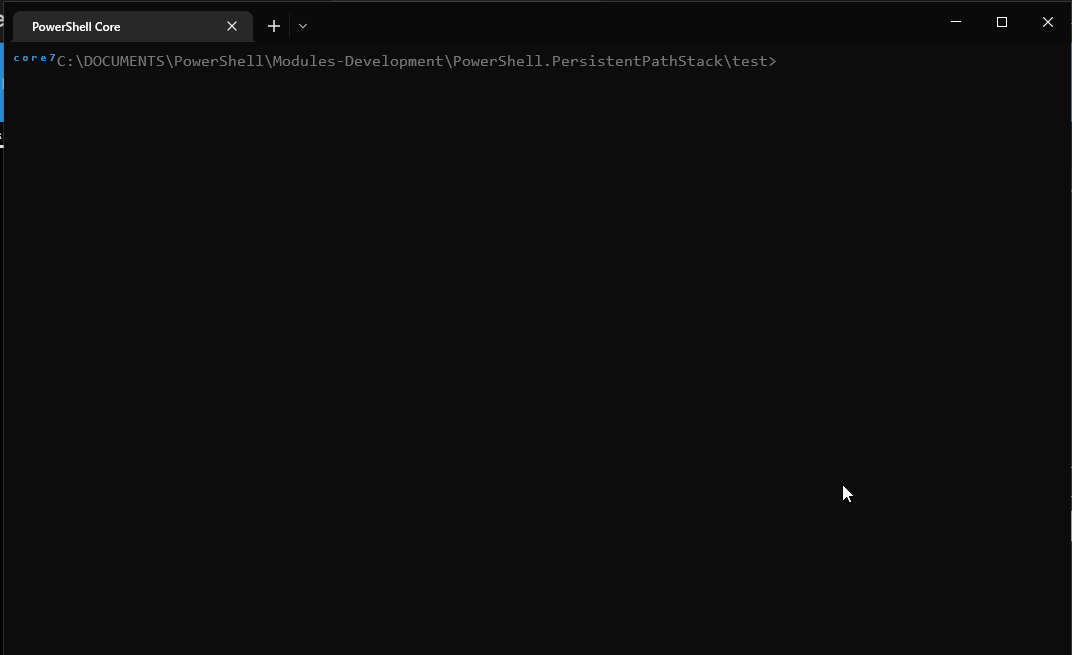
Pushing and popping: Navigating in PowerShell with Push-Location and Pop-Location
Push-PersistentPath details
The Push-PersistentPath, replaces the Push-Location cmdlet. It pushes a location onto the location stack. The new location is now at the top of the stack. You can continue adding locations to the stack as necessary. The location is saved in the registry so that it can be used in other powershell sesions.
Pop-PersistentPath details
The Pop-PersistentPath, replaces the Pop-Location cmdlet. It pops a location onto the location stack. The new location is now at the top of the stack. You can continue adding locations to the stack as necessary. The location is saved in the registry so that it can be used in other powershell sesions.
The difference between Push/Pop-PersistentPath and Push/Pop-Location
At first, using Push-PersistentPath and Pop-PersistentPath may seem like using the cd command to navigate to a location. To some extent, it is. However, these two cmdlets provide additional value that Push/Pop-PersistentPath does not provide.
When you use Push/Pop-PersistentPath followed by a drive path, you move to that location and the location is saved so that you can retrieve that location in another powershell session or even after a reboot. You can use Push/Pop-PersistentPath with any PSDrive. Working with the registry provider is like working with the file system provider. In this next example, use the same commands, Push-Location and Pop-Location, as before. This time, use two registry paths:
# Push a location onto the stack - registry
# First path, HKEY_LOCAL_MACHINE
Push-PersistentPath -Path HKLM:\System\CurrentControlSet\Control\BitlockerStatus
# Second path, HKEY_CURRENT_USER
Push-PersistentPath -Path HKCU:\Environment\
# Get the default location stack
Get-PersistentPaths
Stacks
Push-PersistentPath and Pop-PersistentPath can access locations in multiple stacks . By default, the stack named default is used, but you can specify anoth stack name when calling Pop/Push-PersistentPath. Similarly, you can list the PersistentPath using Get-PersistentPaths
This will list all stacks names
Get-PersistentPathStacks
This will get all values from all stacks
# This will get all values from all stacks
Get-PersistentPaths -All
# This will get values from the stack "MyStack"
Get-PersistentPaths -StackName MyStack
Published


Get the Code
Important Note Do You have Issues accessing the core repository? Don’t be shy and send me an EMAIL at guillaumeplante.qc@gmail.com and I will fix access for you
